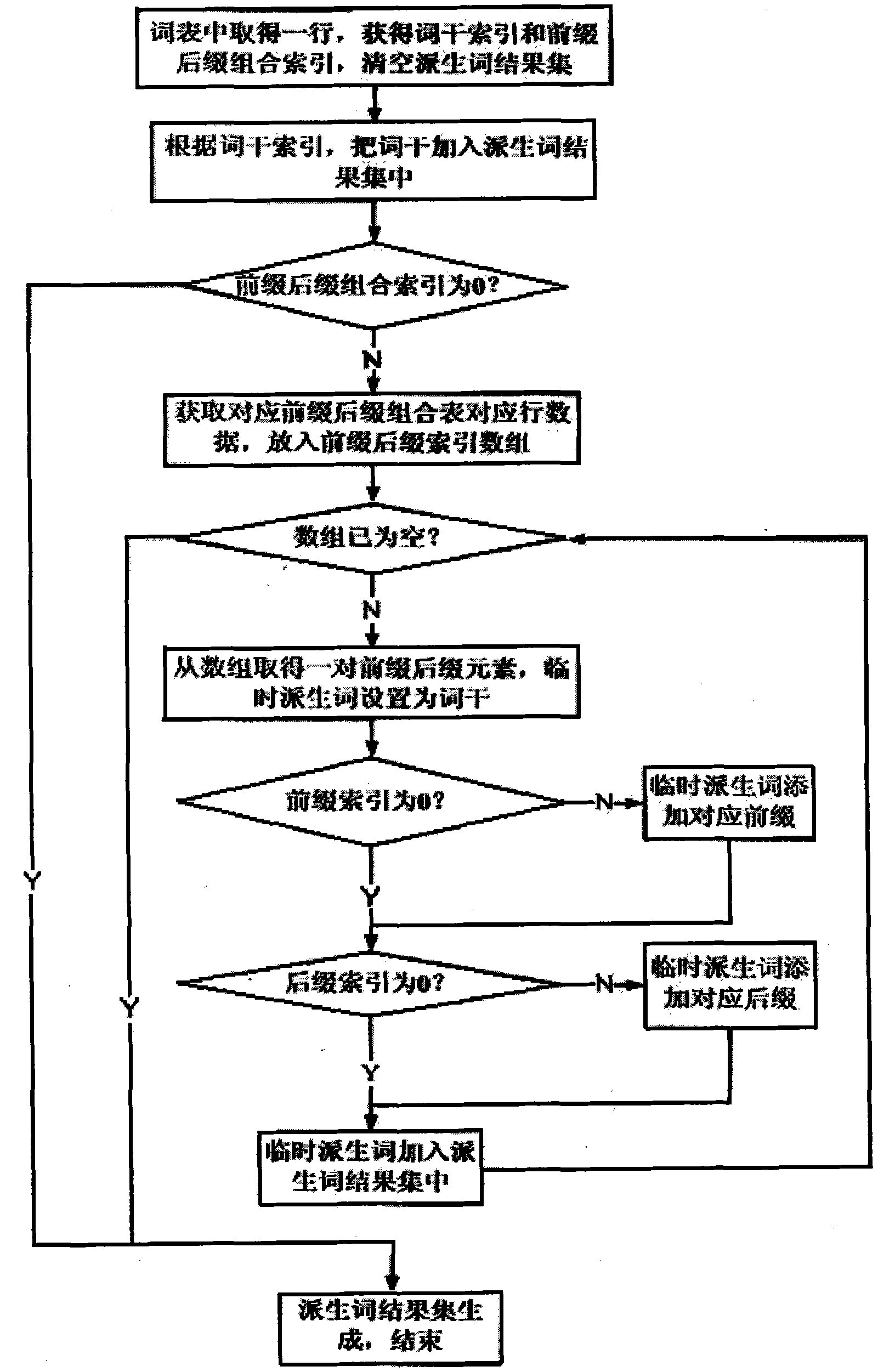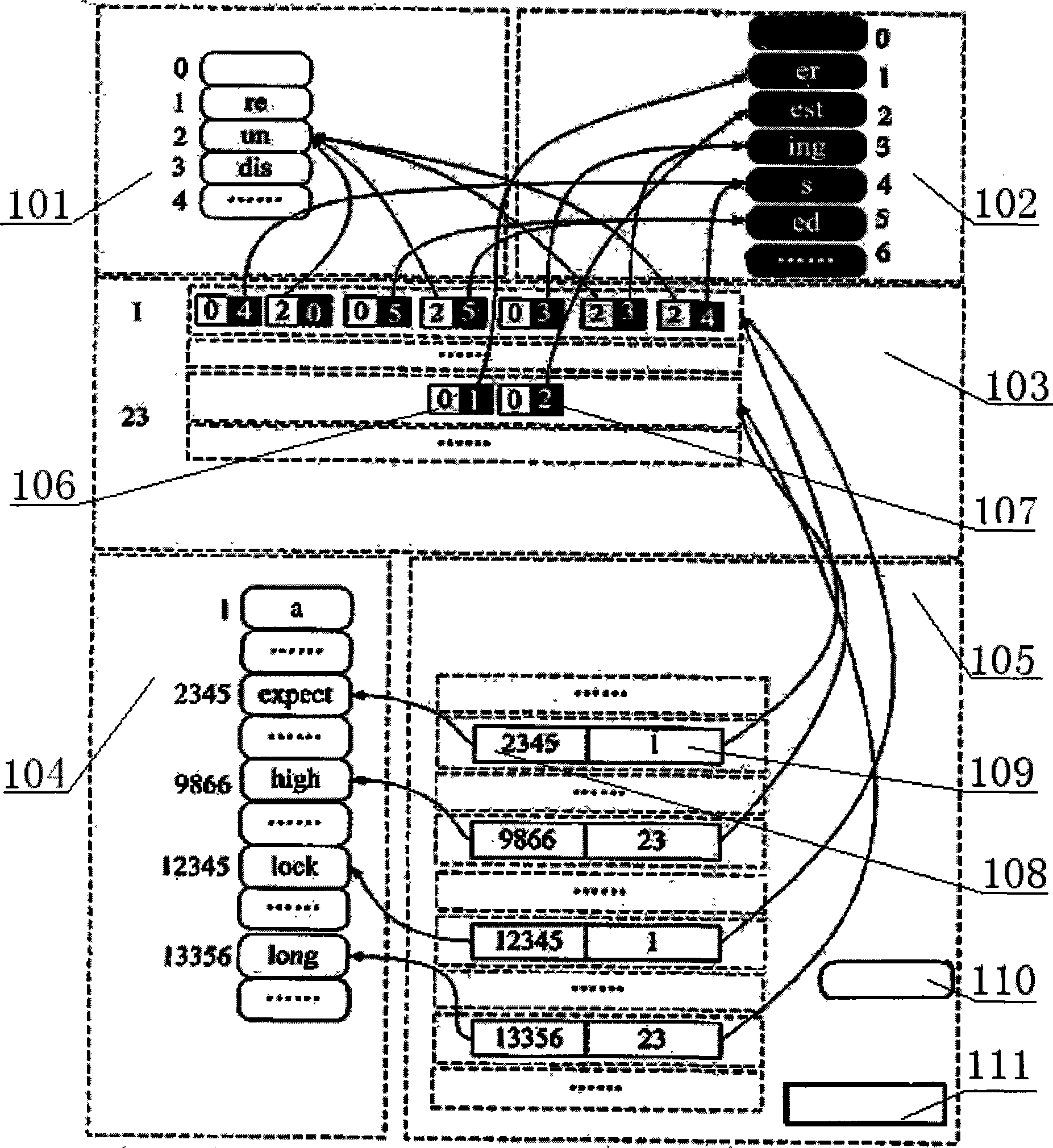Encode combined language term storage and dynamic derivation method
A technology of language and words, which is applied in the field of code combination language word storage and dynamic derivation, can solve the problem of waste of storage space, achieve the effect of improving operation speed, reducing volume and weight, and improving data retrieval efficiency
- Summary
- Abstract
- Description
- Claims
- Application Information
AI Technical Summary
Problems solved by technology
Method used
Image
Examples
Embodiment 1
[0018] The present invention will be described in detail below by taking English as an example. Such as image 3 As shown in Fig. 1, the general vocabulary of English is split, so that the total vocabulary can be divided into four sub-vocabularies through generation technology. The connection relationship of the four participle tables is as follows figure 2 As shown, the rounded corner box 110 in the figure is the language data, and the box 111 is the data table index; the rounded corner bold box is the suffix language data, and the lines with arrows are interrelated directions. The squares with rounded corners in the prefix processing table 101 correspond to prefix language data, and the sequence numbers next to them are prefix indexes 106 . The bold square with rounded corners in the suffix processing table 102 corresponds to the prefix language data, and the sequence number next to it is the suffix index 107 . Through the corresponding data structure algorithm, the pref...
Embodiment 2
[0070] Using English words as an example, a detailed description is given in the application of embedded devices:
[0071] Verb: work, the entry work is saved in the database, but in the actual sending of text messages or emails, the original form of work is not used very much, and the verb will be conjugated according to different tenses and subjects.
[0072] Specific rules such as:
[0073] I worked very late last night.
[0074] Add -ed to the past participle in the past tense.
[0075] I am working right now.
[0076] The present continuous tense and the present participle end in -ing.
[0077] He works very hard.
[0078] Add -s to the third person singular present tense.
[0079] Since most of the verbs have the same tense and number changes as the word work, using the method of the present invention in the device can store more parts of speech in the same storage space, and is conducive to improving the efficiency of data retrieval.
PUM
 Login to View More
Login to View More Abstract
Description
Claims
Application Information
 Login to View More
Login to View More - R&D
- Intellectual Property
- Life Sciences
- Materials
- Tech Scout
- Unparalleled Data Quality
- Higher Quality Content
- 60% Fewer Hallucinations
Browse by: Latest US Patents, China's latest patents, Technical Efficacy Thesaurus, Application Domain, Technology Topic, Popular Technical Reports.
© 2025 PatSnap. All rights reserved.Legal|Privacy policy|Modern Slavery Act Transparency Statement|Sitemap|About US| Contact US: help@patsnap.com



